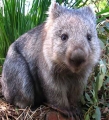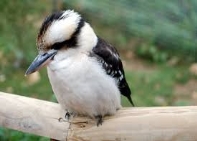Методична розробка уроку з англійської мови "Невідома Австралія"
Методична розробка уроку англійської мови
викладача англійської мови
спеціаліста І категорії
Базиченко Вікторії Вікторівни
Розмовна тема – «Австралія»
Граматична тема – Порядок слів в англійському реченні.
Мета уроку:
методична – активізація пізнавальної діяльності здобувачів освіти за допомого мас-медіа, інтерактивних і дидактичних засобів
навчання;
навчальна – формування англомовних компетенцій;
– формування соціокультурних компетенцій при вивченні
розмовних тем країнознавчого циклу ; формування
навичок самостійної роботи з іншомовним текстом;
розвиваюча – розвиток мотиваційної сфери здобувачів освіти; збагачення загального світогляду учнів; розвиток когнітивних здібностей;
розвиток вмінь навичок моно- і діалогічного
мовлення ; розвиток і вдосконалення лексико – граматич-
них умінь і навичок аудіювання, говоріння, читання;
розвиток оперативної і довготривалої пам`яті ; розвиток
навичок письмового перекладу;
виховна – виховання поважного відношення до культури, цінностей і
традицій інших народів; виховання почуття відповідальнос-
ті за виконання дорученої справи;
Міжпредметні –географія світу, всесвітня історія, зоологія, народознавство,
зв`язки мистецтвознавство;
Внутрішні – етимологія, фонологія, орфоепія, орфографія, лексикологія
предметні зв`язки фразеологія;
Тип року – комбінований.
Обладнання: – екран, комп`ютер, проектор, мультимедійна презентація,
плакат-схема навчальної гри «Навколо Австралії», набір
лексичних одиниць для побудови монологічного
висловлення; дидактичні роздавальні матеріали, доповіді здобувачів освіти, набір штучної австралійської валюти для біз-гри “Jеорardy”, елементи для складання ментальної карти з
Австралії, цитати про Австралію для оформлення уроку.
Методичні Кубарьков Г.Л. «Англійська мова без проблем», Донецьк,
джерела ТОВ ВКФ «БАО», 2007; Kathy Gude, Michel Duckworth
“MATRIX” intermediate, Oxford University Press, 2002,
Google, Vikipedia (інтернет ресурси); відеофрагмент з
документального фільму виробництва ВВС “Wild
Australisia»
План уроку.
1. Організаційна частина.
Привітання, облік присутності.
2. Повідомлення теми, цілей та задач уроку.
Декларація епіграфу до уроку.
3. Мотивація навчальної діяльності учнів.
Показ відеофрагменту про Австралію.
4. Актуалізація опорних знань і умінь учнів.
- фронтальне опитування
(артикуляційне вправляння з основним лексичним матеріалом);
- ущільнене опитування (навчальна гра «Словниковий кошик);
- індивідуальне опитування (рольова гра «прес-конференція»).
- фотовікторина.
5. Засвоєння нового навчального матеріалу.
- лекція вчителя про австралійський варіант англійської мови із
застосуванням мультимедійної презентації;
- аудіювання діалогу на австралійському сленгу;
- початкове закріплення та повторення нового навчального матеріалу(бесіда);
- навчальна гра «Побудуй речення».
6. Формування умінь із застосуванням на практиці.
Усне опитування (ділова гра).
7. Підведення підсумків уроку та оцінювання.
- групове складання опорної схеми моно-мовлення про Австралію;
- оцінювання та коментарі викладача.
8. Повідомлення домашнього завдання.
План-конспект уроку.
І. Введення.
1. Організаційна частина.
Привітання, облік присутності.
Т: Good morning, students! I`m glad to see you. Before we start our work let`s check
presence. Is anybody absent?
2. Повідомлення теми, цілей та задач уроку.
Декларація епіграфу до уроку.
T: Students, as you see, we go on speaking about Australia. Our topic is “Mysterious Australia” for the country is full of many secrets and unusual things. Today we have to read texts, answer some questions, play games and even go on virtual excursion. For this we have to remember words` order in English sentences. So, put down the grammar topic – “Sentence Order”. But our main goal is to discover Australia for ourselves. In this matter, I think, the words of the famous French mathematician, philosopher, investigator and writer Blez Paskal are most expressive:

Let`s try to prove the idea at our lesson.
3. Мотивація навчальної діяльності учнів.
Показ відеофрагменту про Австралію.
Well, to begin with I should say that today all of you have a good chance to be come
cleverer. You`ll got much information about an English-speaking country of Australia.
Why should you know a lot on Australia? Who knows, maybe some time later you`ll visit Australia, yeah? But what is Australia? What do they wear in Australia? How do they speak in Australia? What do they like to eat in the country? Let`s get known.
(Демонструється епізод документального фільму про Австралію).

ІІ. Основна частина уроку.
1. Актуалізація опорних знань і умінь учнів.
T: Did you like the film? Fine. You know, guys, I couldn`t tell many interesting and new facts about Australia myself, it`ll be very difficult. I think, you`ll help me, `cause some of you are prepared for the lesson , aren`t you ? So, imagine that we take part in a press-conference, where some participators read their reports and journalists may put some questions. Well, the reporters for today are Mr.G.Pastushenko, Mr. M.Yevchuk, Mr.S.Oliynuk, Mr.O.Kenia, Mr.V.Hendel, Mr.D.Nelip, Mr.V.Hrebun,and Mr.G.Cherney,Y.Liodovyi, Mr.R.Havrysh will work as journalists today.Do you
agree? That`s settled.
T: Of course, we`ll speak a lot, there for we`ll need some words and word combinations describing various parts of Australia. Maybe one of you wants to act as a teacher?
- Фронтальне опитування.
(Підготовка артикуляційного апарату до іншомовного мовлення).
Один з учнів в ролі вчителя диктує слова з презентації, а група повторює.
 Indian - Pacific
Indian - Pacific
Adelaide - Eyre
Murray - Darling
Canberra - Perth
continent - island
Australia - Australian
Melbourne - Brisbane
equator - hemisphere
Sydney -Sydneysiders
Botany Bay -Coral Sea
Great Barrier Reef -Great Dividing (Slide 2)
- Ущільнене опитування.
(Навчальна гра «Word Spare» («Словниковий кошик»)
T: The best way to know Australia well is to travel. How to distinguish, which of the units will match our topic “Travelling”? Let`s play a game. The reporters guess the words which will match, and journalists say if the reporters are true or false. Choose some patterns:


(На слайді декілька слів різного значення. Потрібно виділити лише ті, які стосуються теми «Подорожі». (Slide 3)


- Індивідуальне опитування. Рольова гра «Press-conference»
(Читання доповідей в якості випереджальних домашніх завдань).
T: Gentlemen, we`re starting our press-conference. We have some men to make reports. The first reporter we announce is a geographer. Who tells us about the position of Australia?(Учні читають або представляють усно доповіді про різноманітні сфери життя в Австралії в порядку, відповідному тому, що в електронній презентації ).
GEOGRAPHICAL POSITION (Slide 4)
 Аustralian Commonwealth (Australia) is a state in the southern hemisphere. The capital of the state is Canberra. It occupies the continent of Australia, the island of Tasmania and many other islands of the Indian and the Pacific Oceans. It holds the sixth place in the world by its area and is the only country in the world that occupies the whole continent.
Аustralian Commonwealth (Australia) is a state in the southern hemisphere. The capital of the state is Canberra. It occupies the continent of Australia, the island of Tasmania and many other islands of the Indian and the Pacific Oceans. It holds the sixth place in the world by its area and is the only country in the world that occupies the whole continent.
AUSTRALIAN HISTORY (Slide 5)
 Captain James Cook`s visits in 1770 and 1772-1775
Captain James Cook`s visits in 1770 and 1772-1775
opened the continent for the English. The first settlers
in Australia were convicts who came from Britain
in 1788. Thousands of Aborigines died from fighting
the British or from the diseases brought to Australia.
Only after 1940 the number of Aborigines began to
grow again.
AUSTRALIAN “RAISIN” (Slide 6)
 Sydney, the largest city and port. Its most majestic building is the Sydney Opera House, the most expensive project of all times. Discovered by Arthur Phillip in1788, Sydney was named in honour of Lord Sydney who at that time was a minister of the British
Sydney, the largest city and port. Its most majestic building is the Sydney Opera House, the most expensive project of all times. Discovered by Arthur Phillip in1788, Sydney was named in honour of Lord Sydney who at that time was a minister of the British
colonies.
POPULATION (Slide 7)




AUSTRALIAN ABORIGINES (Slide 8)
 Today there are about 160,000 aborigines in Australia. They all have their unique language, traditions and relation system.
Today there are about 160,000 aborigines in Australia. They all have their unique language, traditions and relation system.
In fact, we should admit that after their occupation the British drove the Aborigines off to the most dry territories, besides they discriminated some political rights of the national minorities.
THE HOTTEST OUTBACK (Slide 9)
 More than half of Australia gets very little rain that`s
More than half of Australia gets very little rain that`s
why it is considered to be the driest continent.
 Australian deserts are the Great Victoria Desert, the
Australian deserts are the Great Victoria Desert, the
Great Sandy Desert, the Simpson Desert and the Gibson
Desert.
INDUSTRIES (Slide 10)
Australia is rich in minerals, metals; its mostly developed industries are motor-car, machine-building. But still sheep remain the main resource of the country. They give meat, milk, but mainly – wool. Everything made of Australian sheep wool has the brand-name “Jersey”.
![]() REEFS” OF EDUCATION (Slide 11)
REEFS” OF EDUCATION (Slide 11)
They use two-way radio system \”Schools of the Air”\
for consulting pupils from the remote regions and can`t get
 state schools. They listen to the teacher on the radio each day at school time. Students have their own books and answer over microphone. The teacher corrects and gives home assignment. The completed homework is to be mailed to the teacher. The homework is discussed over the radio,
state schools. They listen to the teacher on the radio each day at school time. Students have their own books and answer over microphone. The teacher corrects and gives home assignment. The completed homework is to be mailed to the teacher. The homework is discussed over the radio,
corrected and mailed back. In Australia education is compulsory from 6 to 15\16.
WILD AUSTRALIA (fauna) (Slide 12)
- Фото-вікторина «Фауна Австралії»
(Cемантизація лексичного матеріалу).
T: Guys, look here. I see, you`re a little bit tired, aren`t you? So, I suggest playing a very interesting game. It`s a quiz, your task is to guess names of the animals. (На слайді зображенн 18 представників фауни Австралії. Завдання для учасників конференції – дати їх назви: качкодзьоб, вомбат, летючий лис, дикий пес Дінго, тасманійський диявол, мурахоїд, морський коник, опосум, гоана, гекон, какаду, коала, нумбат, хвилястий папуга, лірохвіст, вьюрок, страус Ему, отруйна медуза).

















- Рольова гра «Прес-конференція» (продовження). (Slide 13)

VICTIMS OF CIVILIZATION
It was the wild Tasmanian tiger. The last of the species
lived in the 2nd half of the last century. How much pitiful, we may see none of them any more…..
“KOOKABURRA” (A FOLK SONG) (Slide 14)
 Kookaburra sits on an old gum tree,
Kookaburra sits on an old gum tree,
Merry, merry king on the bush is he.
Laugh, kookaburra, laugh, kookaburra,
Gay your life must be.
SPORTS & GAMES (Slide 15)
 В презентації використаний авторський вірш викладача про спорт в Австралії.
В презентації використаний авторський вірш викладача про спорт в Австралії.
Australians admire their healthy way of lives.
They have good-looking bodies as well as white-snow smiles,
Prefer no crisps or pastries, most things take from the seas,
 Besides, they copy recipes from excellent Chinese.
Besides, they copy recipes from excellent Chinese.
They do baseball and surfing, can run and jump, and swim.
Strong health`s Aussie doping – and this is their dream!
THE NATIONAL CUISINE (Slide 16)
 Beef is the most popular meat, it is served plain, not spicy. A favourite dessert – “The Pavlova shell” or “Pav” (created by the chef Bert Sachser) – a tart with whipped cream and ice-cream. The distinctive restaurant is BYO (bring your own), a smaller and less expensive one.
Beef is the most popular meat, it is served plain, not spicy. A favourite dessert – “The Pavlova shell” or “Pav” (created by the chef Bert Sachser) – a tart with whipped cream and ice-cream. The distinctive restaurant is BYO (bring your own), a smaller and less expensive one.
THE NATIONAL SYMBOLS (Slide 17)





![]()
![]()
![]()
![]()
![]()
The Australian national anthem (hymn) «Advance Australia fair!»


3. Засвоєння нового навчального матеріалу.
- лекція вчителя про австралійський варіант англійської мови із застосуванням
мультимедійної презентації.
«Аustralian variant of English»
T: Australian English began diverging from British English shortly after the foundation of the Australian penal colony of New South Wales in 1788. British convicts sent there, (including Cockneys from London), came mostly from large English cities. They were joined by free settlers, military personnel and administrators, often with their families.
Three main varieties of Australian English are spoken according to linguists: broad, general and cultivated. They often, but not always, reflect the social class or educational background of the speaker.
The majority of Australians speak with the general Australian accent British words such as mobile (phone) predominate in most cases.
Cultivated Australian English has some similarities to British Received Pronunciation, and іs often mistaken for it.
There are no strong variations in accent and pronunciation across different states and territories.
Australian English has some peculiarities in pronunciation, lexical units and word-formation.
 Australian English peculiarities in pronunciation are as follows:
Australian English peculiarities in pronunciation are as follows:
But, of course, the most remarkable changes appeared to be in vocabulary.
Vocabulary. In 1945 Sidney J. Baker published the book The Australian Language which was a milestone in the emergence of a separate Australian Standard.Australian English has many words that some consider unique to the language. One of the best known is outback, meaning a remote, sparsely populated area. Another is The bush meaning either a native forest or a country area in general.
- Fair dinkum can mean “are you telling me the truth?”,“this is the truth!”,or“this is ridiculous!”depending on context - the disputed origin dates back to the gold rush in the 1850s, “dinkum” being derived from the Chinese word for “gold” or “real gold”: fair dinkum is the genuine article.
 Extinct East Midlands dialect in England: dinkum means hard work or fair work Dinky-di means true or devoted: a ‘dinky-di Aussie’ is a ‘true Australian G'day is well known as a stereotypical Australian greeting - it is worth noting that G'day is not synonymous with the expression “Good Day”, and is never used as an expression for "farewell". Many of these terms have been adopted into British English via popular culture and family links. Speaking about word-forming, we may say that Australian English has a unique set of diminutives formed by adding -o or -ie (-y) to the ends of (often abbreviated) words. There does not appear to be any particular pattern to which of these suffixes is used. Examples with the -o ending include:
Extinct East Midlands dialect in England: dinkum means hard work or fair work Dinky-di means true or devoted: a ‘dinky-di Aussie’ is a ‘true Australian G'day is well known as a stereotypical Australian greeting - it is worth noting that G'day is not synonymous with the expression “Good Day”, and is never used as an expression for "farewell". Many of these terms have been adopted into British English via popular culture and family links. Speaking about word-forming, we may say that Australian English has a unique set of diminutives formed by adding -o or -ie (-y) to the ends of (often abbreviated) words. There does not appear to be any particular pattern to which of these suffixes is used. Examples with the -o ending include:
- Examples of the -ie (-y) ending include

Ocasionally, a -za diminutive is used, usually for personal names.
- Barry becomes Bazza,
- Karen becomes Kazza and
- Sharon becomes Shazza.
There are also a lot of abbreviations in Australian English without any suffixes. Examples of these are the words
- beaut (great, beautiful),
- BYO (Bring Your Own restaurant, party, barbecue etc),
- deli (delicatessen),
- hoon (hooligan),
- nana (banana),
- roo (kangaroo),
- uni (university),
- ute (utility truck or vehicle)
Influence of Australian Aboriginal languages
Some elements of Aboriginal languages have been adopted by Australian English – mainly as names for places, flora and fauna (for example dingo) and local culture. Many such are localised, and do not form part of general Australian use, while others, such as kangaroo, boomerang, budgerigar, wallaby and so on have become international. Beyond that, little has been adopted into the wider language, except for some localised terms and slang. Some examples are cooee and hard yakka. The former is used as a high-pitched call, for attracting attention, (pronounced ![]() ) which travels long distances. Cooee is also a notional distance: if he's within cooee, we'll spot him. Hard yakka means hard work and is derived from yakka, from the Jagara language once spoken in the Brisbane region.We cannot but mention unique and, indeed, colourful Australian metaphors and similes, as
) which travels long distances. Cooee is also a notional distance: if he's within cooee, we'll spot him. Hard yakka means hard work and is derived from yakka, from the Jagara language once spoken in the Brisbane region.We cannot but mention unique and, indeed, colourful Australian metaphors and similes, as
- as bald as a bandicoot – зовсім лисий
- as cunning as a dunny rat – підступний
- as lonely as a country dunny – одинокий
- flat out like a lizard drinking – дуже зайнятий
Let go alone such Australian expressions, as
- in full feather – при повному параді
- rough end of a pineapple – невдала справа,
- not to know Christmas from Bourke Street - не мати уяви
- not to have a brass razoo – дуже бідний
- dingo’s breakfast – без сніданку etc.
These are the best-known Australianisms in the English-speaking world.
|
Australian E |
World Standard E |
Australian E |
World Standard E |
|
amber |
beer |
evo |
evening |
|
arvo |
afternoon |
G'day |
hello |
|
barbie |
barbecue |
lolly |
sweet (BrE), candy(AmE) |
|
barrack |
cheer |
nana |
banana |
|
beaut |
great |
oil |
information |
|
bloke |
man |
Oz |
Australia |
|
chook |
chicken |
Pom(my) |
English |
|
clobber |
clothes |
sheila |
woman |
|
crook |
ill |
snag |
sausage |
|
daks |
trousers (BrE), pants (AmE) |
tucker |
meals |
|
dinkum |
genuine, true |
|
|
Summing up, we may say that it is quite possible to understand Australian if you know some peculiarities of the language.
- Розвитолк діалогічного мовлення (стандартнa бесідa на сленгу Aussie.)
Передтекстова робота із словником.
T: Guys, now that you`ll listen to this friendly couple, you`d better memorize some new units. Open your vocabularies and make some notes.(Учитель представляє учасників діалогу і пояснює решті групи фразеологічнi особливості австралійського варіанту англійської мови. Учні занотовують фрази, використані в діалозі, і їх тлумачення.)
Mate - приятель.
(be) flat out like a lizard drinking - Я справді зайнятий.
Don`t come the prawn with me - Здається, ти темниш (кажеш неправду).
(to) kid - “надувати”.
(be) up to one`s neck in smth - бути “по вуха” в чому-небудь
(be) on the dog and bone - розмовляти по телефону.
(be) in a sticky situation - бути в делікатній ситуації.
(be) smashed - бути п`яним як чіп\ у дим.
- Парне драматизація діалогу «Australian Kids”
(з підручника Кубарькова Г.Л. «Англійська мова без проблем»)
- Післятекстова робота. Бесіда з учнями про зміст діалогу і переклад.
T: Students, did you like the dialogue and its actors? Well, can you tell us about
its content?
- Початкове закріплення та повторення нового навчального матеріалу.
T: Boys, did you understand the content of the lecture? Now try to answer my questions.
-What language does the Australian variant co0me from?
- Did language of the Aborigines influence Australian English? How?
- Do the Australians like to shorten words? Give some examples.
-Give some Australian specific abbreviations.
- Навчальнa гра “Побудуй речення”.
T: Well, guys, at the lesson all of you have learnt a lot of information on Australia, its geography, history, wild world, some branches of social life. I think, now it`s time to build your own sentences. Let`s play a new game, yeah? It is called “Build a sentence”. The task is to fill sentences with some certain information.” (Вчитель демонструє постер з грою, розміщений на дошці. На ньому подані окремі слова або сполучення, до яких потрібно додати слова і побудувати речення про Австралію. Слова, які випадають учню, визначаються киданням грального кубика з відбитими на ньому позначками від 1 до 6. На плакаті розташований магніт і вчитель поступово рухає його).
![]()
![]()
![]()
![]()
![]()
![]()
![]()
Start again
![]()
![]()

![]()
![]()
![]()
![]()
![]()
![]()
![]()
![]()
![]() Start
Start
![]()
![]() here
here
ІІІ. Заключна частuна уроку.
1. Формування умінь із застосуванням на практиці.
-Усне опитування (Бізнес-гра «Jeopardy”. ).
My dear friends, I suggest summarizing our knowledge in such a way – let`s play a new game. It`s a biz-game called “Jeopardy”! You have some questions on Australia. If you give right answers, you win and take Australian dollars – from 10 Aus$ to 100 Aus$. The sum will depend on hardness of questions. (За правильне виконання завдань даної гри учні отримують інвалюту – австралійські долари залежно від складності питань).
10 Aus$ Does the Arctic Ocean wash Australia?
10 Aus$ How many states and territories are there in the country?
20 Aus$ Is Melbourne the capital of Tasmania?
20 Aus$ Name the most tasty and popular dessert.
30 Aus$ Who was the first to discover Australia?
30 Aus$ Can you name any marsupials?
40 Aus$ Which are the most popular sports?
40 Aus$ What is KOSTIUSCO?
50 Aus$ What do the words BIZZO, POSTIE, HOON mean?
30 Aus$ What is Uluru?
100 Aus$ Translate the word “AUSTRALIA”?
100 Aus$ How do you understand the term “ENDEMIC ANIMALS”?
2. Підведення підсумків уроку та оцінювання.
- Рефлексія. Групове складання опорної схеми моно-мовлення про Австралію.
T: Now let`s make up our Australian flower. You were given homework to make applications where parts of a flower could contain your ideas of Australia as a country.
Учні заздалегідь отримали завдання зробити частини аплікації квітки, на листях якої потрібно було відобразити думки про Австралію.

![]()




![]()

![]()

![]()




![]()


- Oцінювання та коментарі викладача.
3. Повідомлення домашнього завдання.
T: Now, students, that you know a lot of facts about Australia it won`t be difficult to revise the material and to write a composition “Why do I like Australia”.
T: I consider, all of you were quite successful at the lesson. You`ve learnt many interesting facts and various information about wonderful Australia. It is so important that you got the information through your personal investigations. I see, you`ve become cleverer and can speak better, and you like to communicate and play in English. So, we`ve proved the idea of Blez Paskal that “Not only the truth but also its searching brings a sense of self-confidence”. The lesson is over. Good-bye.



WELCOME TO FANTASTIC AUSTRALIA!

про публікацію авторської розробки
Додати розробку
